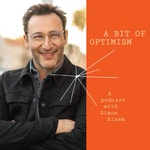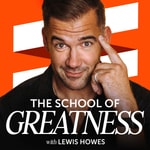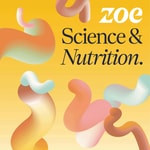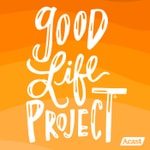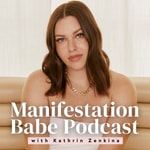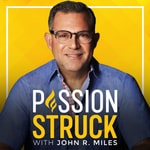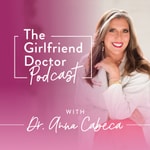The Flipping 50 Show – Details, episodes & analysis
Podcast details
Technical and general information from the podcast's RSS feed.
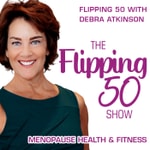
The Flipping 50 Show
Debra Atkinson
Frequency: 1 episode/3d. Total Eps: 99

Recent rankings
Latest chart positions across Apple Podcasts and Spotify rankings.
Apple Podcasts
🇨🇦 Canada - healthAndFitness
11/09/2024#93🇨🇦 Canada - healthAndFitness
09/09/2024#83
Spotify
No recent rankings available
Shared links between episodes and podcasts
Links found in episode descriptions and other podcasts that share them.
See all- http://ginstephens.com/community
1120 shares
- https://www.joinmidi.com/
194 shares
- https://tim.blog/podcast/
185 shares
- https://www.instagram.com/vaginacoach
287 shares
- https://www.instagram.com/hotflashinc
185 shares
- https://www.facebook.com/VagCoach
269 shares
- https://www.facebook.com/joshdech.health
214 shares
RSS feed quality and score
Technical evaluation of the podcast's RSS feed quality and structure.
See allScore global : 53%
Publication history
Monthly episode publishing history over the past years.
Fit or Fat? Training and Measuring Fitness in Menopause
vendredi 6 septembre 2024 • Duration 36:13
Measuring fitness in menopause is complicated. I’m going to take a stab at this and let you know that if you’re not measuring beyond your weight, body composition, inches, and muscle mass at regularly scheduled intervals, you’re doing a disservice.
We get all up in the business of burning calories (wrong goal), having it “feel hard” (sometimes the wrong goal), and forget to measure strength (did you see Olympians test grip strength??? Impressive!) and how well your training is actually helping your HEART.
Let’s go there.
Yes, you want to gain lean muscle. It immediately improves your body composition and takes stress from your heart and joints. It also boosts your metabolism, energy, and blood sugar balance, decreasing insulin resistance and your metabolic health improves.
But your heart fitness IS important.
Mistakes in Measuring Fitness in Menopause and Beyond.
You don’t want or need to know your pace or that you did a mile while you’re doing it. Why? It gives you a false impression of “good” “bad” and means zero. When you’re going uphill, you’re going to go slower. When you’re doing an interval workout you also won’t go as fast as when you’re simply walking a steady state (because to do an interval right you should be recovering completely and that means going slower than your steady pace).
Only if you personally are doing the exact same trail or route you’ve done and you’re trying to go as fast as you can, would that be important.
Not knowing what your heart rate being higher or lower than normal exertion heart rates mean you may interpret it incorrectly as “good” or “bad.”
Measuring Fitness in Menopause During Heart Rate Zone Training
Unless you’ve been tested … on the treadmill or bike by an experienced trainer who can monitor your stages and interpret results… the zones shown are based on “average.”
For adults over 40, age-related predictions underestimate where you should be. You’re then going to get a red flag when potentially you shouldn’t.
On an interval day, you’re not “working too hard” simply because your breathlessness exceeds some arbitrary heart rate not based on you. If it doesn’t feel like a fit, get tested. (more below)
But on a recovery day, you absolutely could be working too hard even if you “feel fine.”
All signs should be assessed, not just one.
How do I know this?
Less from 40 years of exercise physiology education (and 25 as an educator/master trainer of other trainers)…
And more from time training as a triathlete.
From day 1 that I decided I wanted to be (I was 20 working at a health club in the south my summers in college) to the point I actually did begin training (I thank 4-0 for making me take action), I was working with a science-geek coach who daylighted/moonlighted as an engineer at a university and a USAT coach to some pros as well as age-group weirdos like me who went to the country club pool… to swim laps, got up at 3am at USAG (golf) events with my son to run miles in the dark before his tee-time. You get the idea.
Had I not experienced the ability to test both in clinical settings (I did years of VO2 max testing on students every semester after having done it myself in undergrad and grad school) and more accessible predicted and associative zone testing that can be done using Heart Rate monitors and treadmill protocols to arrive at personal zones, I would have severely UNDER or OVER trained. My post here is to help you avoid doing that. And avoid what you THINK is ideal based on the “peer pressure” from social media that may be less supportive than it is distractive.
Measuring Fitness in Menopause (what we think)
- Always working as hard as possible when exercising
- Completely relying on “feels like” for recovery status between sessions
- Getting heart rate high in a long endurance workout
- The more intervals the better
- Doing weightlifting and cardio intervals alternately
- It feels hard
- It makes me lose weight
Measuring Fitness in Menopause and beyond (What is Really Good)
- Knowing how hard to push for 4 mins vs 30 seconds
- Knowing how to do a recovery day and keep heart rate low
- Not allowing heart rate to creep up during a recovery workout
- Using high intensity intervals on specific days
- Reaching muscle fatigue with a muscle-specific workout (followed by 48 hrs min recovery)
- Reaching breathlessness in interval training when you’re fresh for optimal speed, resistance or power (depending on the mode)
- Understanding bike, rowing, and swim heart rates will differ from on your feet but breathlessness doesn’t lie
The bottom line is this…
A good fitness program improves:
- strength
- absolute skeletal muscle
- body composition (decreases body fat)
- energy levels throughout the day
- speed
- heart rate response at the same effort level (lower heart rate at same effort over time)
- heart rate recovery rate after exercise
So, if you aren’t TESTING, before you start and periodically, let’s get that started right now, shall we?
[in our member’s area there is a self-test protocol that we’ll help you interpret if you share results]
Doing a more comprehensive test (like the one using stages of speed and or incline or both) to record heart rate response is the way to determine heart rate zones.
The following options won’t do that. But they will give you a way to gather information on how you’re doing now, compared to averages or not.
A Few Facts on Measuring Fitness in Menopause:
Heart rate on a bike will be about 10 beats lower than corresponding “work” on your feet (treadmill). So, if you test on a bike, you need to know “bike heart rates” vs “treadmill heart rates.”
Want to Test So You Can Measure Fitness in Menopause and Beyond ?
VO2 testing is uncomfortable. The last time I did it was December 2018. You don’t have to go to a university, but chances are if they have an exercise physiology lab or an extensive athletic program, you can test there. Other fitness and health pros also offer this, most often on a bike. But if that feels like too much or too expensive, you can establish a way to learn if your fitness is working.
If you have no access to protocol [our member’s area or an experienced coach who can do this] start here:
Keep it simple.
-
What is your resting heart rate? First thing in the morning. (average of 3 days)
-
What is your heart rate before this test?
-
Do a mile walk test. (For a more elaborate test that was originally published in 1987, see the Rockport Walking Test, see the resource below). Do it on a flat course that you can repeat exactly. Even though we all have the ability now to do a mile and know, it needs to be repeatable. Same start, same course. A track would be ideal. A treadmill is not.
When it’s a test you should be pushing it to find out what your fastest walk pace is. Without your feet leaving the ground (this is running), what is your mile walk time?
-
What’s your final heart rate?
-
Then how soon does your heart rate come back to the rate you were pre-test? Record that time.
Measuring Fitness in Menopause
Whether you do this simple test or you use the ROCKPORT test you begin to understand all of the components that measure true fitness. Skinny is not fit. Fat is not unfit. There are health complications with each for both now and later.
What you want, no matter your weight, is strong, and getting so will improve your heart too.
Now you have data at least to measure whether your fitness is improving.
And yes, there is a way to compare yourself to others, however, right now that’s not the point. The point is YOU. Is you now fitter than you last year? Is you in six months – let’s make a date to do this again by putting it on your calendar – more fit than now?
Look, life happens. A virus may happen, as I write, we just saw that again globally at the Olympics. Your smooth sailing life will have babies and funerals and interruptions. But from time to time check in and consider how it’s going for you.
And how refreshing to actually stop looking at weight and fat for just a second and look at your heart.
References:
https://www.verywellfit.com/rockport-fitness-walking-test-calculator-3952696
Kim K, Lee HY, Lee DY, Nam CW. Changes in cardiopulmonary function in normal adults after the Rockport 1 mile walking test: a preliminary study. J Phys Ther Sci. 2015;27(8):2559-61. doi:10.1589/jpts.27.2559
Note: the Rockport test suggests you can use a treadmill. I prefer the outdoors. The treadmill is doing a degree of the work for you moving that belt. However, if it’s the only safe option, do the pre and post test in the same way. Try not to hold on (this should be true always! And definitely don’t hold on and lean back!)
Other Episodes You Might Like:
- What are Heart Rate Zones and How are They Helpful Over 50?https://www.flippingfifty.com/heart-rate-zones/
- Muscle and Body Composition in Menopause: https://www.flippingfifty.com/muscle-and-body-composition-in-menopause/
- 9 Ways to Measure Fat & Body Composition | Best & Worst: https://www.flippingfifty.com/measure-fat/
Resources:
- Want to comment? If you’re not in a program or our membership, join the Flipping50Insiders Facebook group where we’ll hear you!
- Stronger: https://www.flippingfifty.com/getstronger
Running Long in Midlife and Beyond One 50-mile Run for a 50th Birthday
mardi 3 septembre 2024 • Duration 47:44
50 miles for 50th bday?
Running long in midlife isn’t the first thing (or second) I recommend to women. But what happens when your peak estrogen levels were at least a decade ago? What if you’ve got a crazy goal, want to go for it, and you know how to interpret reactions and respond accordingly?
Come on this unique trail as I interview a friend and colleague around her idea of a fun birthday party that not all of us will appreciate the same way.
My Guest:
Margaret Floyd Barry is a functional nutritionist, author, speaker, educator and advocate of optimal health through nutrition of adult life. Seeing family members suffer the effects of chronic illness from a young age, Margaret helps others find a better way back to optimal health and wellbeing.
Margaret worked on complex cases of autoimmune, including her own. She established a powerful system for restoring health by addressing the root cause of illness. Margaret teaches fellow practitioners the proven system with life-changing results through Restorative Wellness Solutions, which has trained and certified over 1200 qualified health practitioners worldwide. She is the author of Eat Naked: Unprocessed, Unpolluted and Undressed Eating for a Healthier, Sexier You and The Naked Foods Cookbook.
Questions We Answer in This Episode:
- What inspires a woman to run 50 miles for her 50th birthday? [00:05:30]
- How long have you been running? [00:09:00]
- Where are you in the menopause timeline? How much has that changed your training and recovery? [00:21:20]
- How do you train for a 50 mile run differently than your previous marathons? What was the result? [00:21:20]
- What were the key dietary strategies you used? What are the results? Were they different in the past? [00:26:50]
- How did you manage autoimmune disease and training at this level, without triggering an all out autoimmune flare? [00:32:20]
- How did recovery play into things? [00:26:10]
- Would you do it again? Does longer appeal to you? [00:40:20]
- Did training take a toll on energy for work or relationships? [00:24:40]
Connect with Margaret:
On Social:
- Instagram: https://www.instagram.com/margaretfloydbarry or https://www.instagram.com/restorativewellnesssolutions/
Other Episodes You Might Like:
- 78 Year Old Endurance Athlete Training for Triathlons: https://www.flippingfifty.com/endurance-athlete/
- Ironman Dexter Yeats About Being 72, Unstoppable, and Unique: https://www.flippingfifty.com/ironman-dexter-yeats-72-unstoppable-unique/
- Take a Walk with a 57-year old Book Author | Just 1400 Miles: https://www.flippingfifty.com/take-a-walk/
23 Lab Tests in Menopause and What They Tell You
vendredi 2 août 2024 • Duration 52:00
In this episode I’m sharing my recent lab test, 23 lab tests in menopause, to be exact. I’ll share why so many, how often, what I’ll learn from them. If you’re at a loss for what to order or really, what you need and want a doctor to run this will help.
Connecting the dots is not always easy! Though I ran almost all of these as a part of writing You Still Got It, Girl! Almost a decade ago, by ordering self-directed labs and doing the research to interpret them and take actions to either follow up with a physician or to consider dietary, exercise, and natural solutions that would improve results, I recommend you utilize a physician who’s willing to and not threatened by your desire to learn more about the what, why and when for these tests.
You know how you feel and what’s right for you. Hopefully you’re not settling for less than feeling great. Signs that you’re not doing okay, in spite of your efforts include unexplained weight gain, inability to lose it, feeling lethargic/tired either on a regular basis or after exercise. Add to that insomnia, dizziness, brain fog, gut issues, and so many more.
Having a basic understanding of the tests, that often are not ordered by Western trained docs, and why you want them, may help you be a detective and an advocate for your own health.
Recent Lab Tests in MenopauseFasting Glucose
Fasting levels above 125 are indicative of diabetes. Those 100-125 indicate prediabetes. Knowing this is helpful for monitoring your habits.
A continuous blood glucose monitor can be a fantastic tool for you. https://www.flippingfifty.com/myglucose
Fasting Insulin
Metabolism issues or weight loss resistance are good reasons to check fasting insulin (beyond just fasting glucose). Insulin resistance can promote additional weight gain.
A1C
This number can indicate how well controlled sugar levels have been over the past 3 months and also can indicate a prediabetic or diabetic condition.
Serum Ferritin
Reliable indicator of body’s iron stores. Low or very high ferritin may have a condition that results in fatigue.
Vitamin D 25-Hydroxy
This is important for energy and gaining muscle, particularly fast twitch muscle, as well as energy. Falling into “norms” is under optimal levels so this one can be important for women in midlife and beyond to know.
Uric acid
Optimal levels may support antioxidant activity but too high can be linked to oxidative stress.
Vitamin A
Concentrations of uric acid and vitamin A are closely associated. This test may be used to indicate a reason why uric acid levels are high.
CRP
A major marker of inflammation. Risk of disease increases significantly with high CRP.
A Fasting Lipid Panel
Looking at cholesterol, LDL, HDL and the total/HDL ratio can tell you what’s happening in your body. It might be genetic, lifestyle or also occurring during menopause as the body generates more cholesterol to attempt to produce hormones.
Free Testosterone
This is the testosterone immediately available. Can support weight loss and improve memory and strength.
Testosterone
Elevated testosterone can lead to hair growth, acne, moodiness. But too low can lead to difficulty gaining muscle and bone density.
DHEA-S
Your precursor to the sex hormones and also an indicator of adrenal function.
Variety of Lab Tests in MenopauseEstradiol
Check for optimal levels for some women, confirming they’re in menopause and for others like me doing hormone replacement, that hormone levels are optimized.
Estrone
The estrogen product after menopause.
Progesterone
Can lower post menopause and make sleep and relaxing harder.
Thyroid Hormone Tests
TSH
Released by your brain to signal your thyroid gland. It can be used to monitor dosing of your thyroid medication or as a screening test for the presence of thyroid disease.
Free T4
The thyroid makes predominately T4. Free T4 is what your body uses to make the active thyroid hormone called free T3. These are advanced biomarker tests, not routinely done, but very helpful to determine if the thyroid can be affecting how you feel.
Free T3
Symptoms (constipation, weight gain, tiredness, low libido) of low thyroid may be missed (passed off as normal or something else) unless the active thyroid hormone (free T3) is measured. High levels may indicate hyperthyroidism. Symptoms of hyperthyroidism include fatigue, anxiety, sudden weight loss, rapid heartbeat, irritability, more frequent bowel movements, difficulty sleeping, sweating and tremors. Free T3 is an advanced screening biomarker that helps screen routinely missed thyroid issues.
TPA (Thyroid Peroxidase Antibodies)
Thyroid disease has become very common and we can often pick up inflammation in the thyroid years before the thyroid fails. This is important because natural interventions may help reverse the inflammation of the thyroid gland.
TA (Thyroglobulin Antibodies)
This test can be positive in people with inflammation of the thyroid gland, and it can be seen years before complete thyroid failure – giving you time to take action!
Reverse T 3
Reverse T3 is the storage form of the active thyroid hormone. Many conditions can cause you to store thyroid instead of use it as active free T3. If your reverse T3 is high then you may need to address the reasons why.
Broader Selection of Lab Tests in Menopause**FSH (**Follicle-stimulating hormone)
Levels of this hormone indicate phases of hormones including puberty, reproduction and menopause. Levels rise significantly after menopause. ****This test can be helpful for someone who isn’t sure what’s happening or wants to confirm levels are dropping.
**SHBG **(**Sex Hormone Binding Globulin)SHBG is used to keep excessive free estrogen out of the blood stream, looking at these levels can help identify if hormone control health habits can improve your overall health. Sex hormone binding globulin is a protein mainly produced by the liver, and studies show that diets high in simple sugars cause the liver to produce less SHBG. Low levels of SHBG are seen in obesity, prediabetes, insulin resistance and type 2 diabetes.
Other Tests
Total Cortisol
Early morning cortisol screen for adrenal gland function.
4 Sample Saliva Test
Measures throughout the day to get a more accurate picture of your stress hormone pattern.
ACTH Stimulation Test
Administered by a physician to test response
Omega 3 and 3/6 Index
For muscle and joint aches and pains, and brain health, knowing your omega 3 and 6 index can help you improve overall health and decrease inflammation.
Food Sensitivity Testing
Depending on which level of comprehensive test you do, you can test for 90 common food sensitivities (or more) and learn what is low, moderate, and highly sensitive for you. Avoiding moderate and higher food sensitivities for 3 months while also taking extra care of your gut can help reduce symptoms of gas, bloating, or other digestive issues stemming from leaky gut situation. Adding probiotics, glutamine, oregano oil and foods known to support gut bacteria can all help improve the gut before attempting to reintroduce.
GI-Map
For gut issues that aren’t resolved with dietary changes, scores will tell you your gut bacteria levels and which may be out of balance so you can choose very specific probiotics to help rebalance, as you avoid foods that show moderate and high on your sensitivity results.
Other Episodes You Might Like:
When Exercise & Diet Aren’t Working: Which Lab Tests Should I Get?:
https://www.flippingfifty.com/which-lab-tests/
Adrenal Fatigue Talk with the Hip Hop Energy Doc, Tricia Pingel:
https://www.flippingfifty.com/adrenal-fatigue-talk/
Is a Food Sensitivity Getting in the Way of Your Fitness After 50?
https://www.flippingfifty.com/is-a-food-sensitivity-getting-in-the-way-of-your-fitness-after-50/
Resources:
**Link to Ultimate Assessment: https://www.flippingfifty.com/store**
https://www.flippingfifty.com/store/coaching-programs/private-coaching-90-min/
Why Insulin Resistance in Menopause is So Important
mardi 30 juillet 2024 • Duration 39:51
How do you know you’re experiencing insulin resistance in menopause? How would you know that weight gain or belly fat may be a result of your insulin resistance? My guest today has type 1 diabetes and shares today the nuances of how to deal with midlife hormonal changes at the same time as dealing with blood sugar and insulin levels.
Insulin resistance in menopause is fairly common. If you’re aware of it, the what and why of it, you can prevent it.
My Guest:Melissa Slemp is a certified nutritional and hormone health coach and personal trainer. Founder and CEO of Abundant Health with Melissa. She helps women 40+ diagnosed with type 1 diabetes to feel more empowered and to live their best life despite their diagnosis. Melissa has lived with type 1 diabetes since she was 14 years old and has experienced how a strong foundation of health and happiness supports our relationships, career, and our beliefs to nurture us emotionally and spiritually so we can thrive with diabetes.
Questions We Answer in This Episode:- Share your type 1 diabetes diagnosis story and how hormone changes impact your day-to-day care? [00:03:40]
- How does insulin resistance change as we age, and what are some key factors contributing to this phenomenon? [00:06:00]
- Can you explain the role of protein in managing insulin resistance and maintaining muscle mass as we get older? [00:15:10]
- How does weight training specifically impact insulin sensitivity and overall metabolic health in aging individuals? [00:14:10]
- What strategies or practices do you recommend for mindful eating to support insulin sensitivity and better blood sugar control? [00:28:50]
- Why is hormone testing important, particularly as we age, and how can it help individuals manage insulin resistance effectively? [00:21:20]
https://www.abundanthealthwithmelissa.com/thrivingwithtype1diabetesafter40
On Social:- Instagram: https://www.instagram.com/bloodsugarboss/
- Linkedin: https://www.linkedin.com/in/bloodsugarbossmelissaslemp/
- Podcast: https://podcasts.apple.com/us/podcast/welcome-to-the-type-1-in-midlife-podcast-hope-filled/id1687168599?i=1000612387984
- Pinterest: https://www.pinterest.com/bloodsugarboss/
- Type 1 In Midlife FB Group: https://www.facebook.com/groups/type1inmidlife
- Honey Health Diabetes App: https://honeyhealth.app.link/99YDyG8QgFkZ
- Your Diabetes Risk: You’re In Control | Midlife Women: https://www.flippingfifty.com/diabetes-risk/
- Stress, Menopause, and Pre-Diabetes? Way Beyond Your Belly Fat: https://www.flippingfifty.com/pre-diabetes/
- Your Glucose Levels in Menopause with the Glucose Goddess: https://www.flippingfifty.com/glucose-levels-in-menopause/
- You Want to Balance Blood Sugar for Belly Fat Reduction: https://www.flippingfifty.com/balance-blood-sugar/
- Continuous Blood Glucose Monitor: https://www.flippingfifty.com/myglucose
- Hot Not Bothered 10 Day Challenge: https://www.flippingfifty.com/hot-not-bothered-challenge-2023/
- 5 Day Flip: https://www.flippingfifty.com/5day
- Membership: https://www.flippingfifty.com/cafe/
5 Ways to Improve Your Mitochondria
vendredi 26 juillet 2024 • Duration 36:00
Improve Your Mitochondria
To improve your mitochondria requires you focus a little more than on just “exercise” or “anything is better than nothing.”
First, though, let's talk about why you want to. Now, if you want a deeper conversation, I’ve got a couple resources for you. There are prior Flipping 50 episodes I’ll link to and if you love to geek out and would love 2 hour long explanations you may want to listen to Peter Attia podcasts on the topic or Rhonda Patrick episodes. They both host longer shows that for the most part many of you express you don’t have time (or patience) for but that are very deep dive.
Counter to some of the “bros” in science, I also don’t agree with Zone 2 training being the best thing for women to improve mitochondria and VO2 max, at least without understanding it.
Practices for Optimal Mitochondrial Performance:
-
Regular physical activity
Base building, strength training, HIIT
-
Intermittent fasting or two meals a day
Times without eating
-
Reduce stress
Overall, stress has a negative impact on mitochondria production because it’s not an “essential” to keep you alive
-
Prioritize sleep
Sleep is regenerating at it’s best
-
Nutritional supplementation
Secret Weapons to Improve Your Mitochondria
- Mitopure / Urolithin A - Results seen in about 2 months of supplementation 500 mg a day
- NAD or CoQ10 - support energy production again, But ignores the need to to clear out poor mitochondria for the inactive (take out the trash) – which is what Urolithin A does. Improves the quality and the quantity of mitochondria. Greater resistance to fatigue, then you walk and move more spontaneously during the day, total energy expenditure increases and blood sugar improves… It's a positive domino effect.
- C60 - longevity agent, educes inflammation from oxidation and free radical damage, degeneration of cartilage, boosts immunity, hair growth, libido, hormones function better
Other Episodes You Might Like:
Are Your Mitochondria Aging Too Fast? | Slow Down to Energy Up: https://www.flippingfifty.com/aging-too-fast/
The Importance of Mitochondria | Energy, Heath, and Longevity
https://www.flippingfifty.com/mitochondria/
The Most Unsuspecting Motivation Source | C60 30-Day Follow Up:
https://www.flippingfifty.com/motivation-source/
Resources:
Energy Bits: https://www.flippingfifty.com/energybits
C60: https://www.flippingfifty.com/c60
Mitopure: https://www.flippingfifty.com/mitopure
78 Year Old Endurance Athlete Training for Triathlons
mardi 23 juillet 2024 • Duration 47:25
Rarely do we look at training for endurance or being an endurance athlete here. Today is different. This isn’t a suggestion nor a recommendation. But it is a glass ceiling lift. Whatever you think is possible, is possible. There are few 78-year-olds training for 4-5 hours on a bike or spending hours a week in the pool and on their zero gravity treadmill... preparing for one of the most daunting events in triathlon. But today’s guest is. My returning guest is a 78-year-old endurance athlete and she’s here to share her next goal. If you walk away with one thing, I hope it is that it’s never too late, you’re not too old. And if you find yourself thinking, she shouldn’t, you reconsider and do a self check about your own fear level instead.
My Guest:Dexter Yeats, age 78, but identified as 79 for Racing, as it is My Last Year in the Female 74-79 Age Group!
In the late 1970s, she began participating in triathlons. In her first race, she finished as the third female overall but was also dead last. There were few female racers back then, and no awards for women, so they received single red roses from a local grocery store. Her first Ironman was in Penticton, Canada, in 1993, where she won her age group (45-49) and qualified for KONA, finishing 10th in her age group. Life's demands limited her swimming and cycling, drawing her to Ultra Running. She ran a dozen 50-mile trail runs and attempted a few 100-mile runs, but her career as a Teamster truck driver restricted her training time, leading to some years without racing. After retiring in 2010, she moved near Coeur d'Alene, Idaho, and resumed racing at 66. She has since completed 15 more full Ironman races, totaling 16, with 10 age group wins and 5 Kona finishes. Despite a few DNFs, she remains undeterred. She has also competed in Ironman 70.3 races, qualifying for the World Championships in Australia, South Africa, and France. In 2018, she won as The World Champion in her age group (70-74) in South Africa. ASEA sponsors her, providing 'Fountain of Youth' products that help her stay healthy, recover and keep going.
Questions we answer in this episode:● How long have you been racing? 00:08:30 ● Any plans to hang it up? 00:09:30 ● What kind of goals do you have? 00:015:40 ● Are you training by the numbers and testing or what does that look like ?00:08:20
● Do you get resistance from people who think this is too much or wonder if you should be doing this? 19:00
Thoughts about endurance training or being an endurance athlete in latter decades? Inspired? Or what are your reactions? Share them with us!
Connect with Dexter: On Social:- Facebook: https://www.facebook.com/dexteryeats/ Instagram: https://www.instagram.com/yeatsdexter/
- Previous with Dexter Yeats Ironman Dexter Yeats About Being 72, Unstoppable, and Unique: https://www.flippingfifty.com/ironman-dexter-yeats-72-unstoppable-unique/
- My Fittest Year | My Ironman without Training: https://www.flippingfifty.com/my-fittest-year/
One Thing I Would Change After 40 Years Working with Women in Menopause
vendredi 19 juillet 2024 • Duration 33:50
Working with women in menopause for 40 years, even before it dawned on me that’s what I was doing, I know now what I wish I’d have done differently.
I’ve never said this out loud quite like this, though I’ve hinted at it. The name Flipping 50 was taken very literally by 50% of those first hearing about it. I at first had to help some understand that 50 referred to the way we think about the second half, the way we prepare for it and look forward vs dread it. With knowledge that no two people “age anything” actually age the same, and that epigenetics or habits have more impact on aging than do our genetics, we can indeed flip 50 if we choose to. Our mission in delivery is to help women optimize their lives through optimizing the fitness they have before, during and after menopause.
Working with women in menopause, the biggest positive impact doesn’t come with helping the 6000 women a day entering menopause, or the 1.1 billion in menopause by 2025. Maybe for a moment right now. In this episode I look back at all of it and some friends, some clients, some family members… everyone of whose name has been changed.
Questions I Answer in this Episode:
- Why women don’t want to pay attention [00:03:00]
- When body composition was first measured [00:24:00]
- When we first really addressed the importance of sleep [00:28:50]
- Why we didn’t talk about sex and it could have helped [00:10:20]
- The effects of alcohol and weight, and bone patterns [00:09:20]
- What seems to matter most [00:15:40]
Mindset/attitude/happiness/purpose … an ultra positive effect even when lifestyle habits were mild to moderately present (no excess exercise commitment, just basics)
What I’d Change:
- Resistance training is a more central part of every woman’s workout from 30 on
- Resistance training relayed as the most important component of fitness in college
- Every university student be required to take a basic physical fitness course
- Monitoring muscle, body fat, strength and VO2 from age 30 on
- A baseline bone density scan
- Questions about digestion, elimination asked in intake sessions
- Increased awareness of skin and gut connection for women (and men)
- Increased awareness of mental health and diet connection
Challenge you:
Have a conversation with a young woman. Leave out the word “should.” Ask if she wants support.
Resources:
- Membership: https://www.flippingfifty.com/cafe
- 10-Day Challenge: https://www.flippingfifty.com/hnb-challenge
Other Episodes You Might Like:
- What They Don’t Teach Women About Strength Training and should: https://www.flippingfifty.com/teach-women-about-strength-training/
- Ageless Aging: Believe it or Not? https://www.flippingfifty.com/ageless-aging/
- Midlife Weight Loss: Burn Body Fat, Balance Your Hormones https://www.flippingfifty.com/midlife-weight-loss/
Lose Weight in Menopause Faster and Easier Than You Ever Thought Possible
mardi 16 juillet 2024 • Duration 39:03
If you have repressed metabolic syndrome your quest to lose weight in menopause faster and easier is sunk. But stay tuned to this episode.
In this Flipping 50 episode with podcast guest favorite, Stu Schaffer we talk about the #1 goal most of you tell me is yours… weight loss. More specifically weight loss in menopause. It’s stubborn, you’re tired, nothing you used to do works any more.
In the 11th year of the podcast, having interviewed thousands of guests, Stu’s episode in last year was one of the MOST downloaded of all of 2023.
My Guest:Stu Schaefer is a 20-year award-winning celebrity weight-loss coach. He specializes in helping women over 40 put their body into The Thermogenic State so they burn fat 24/7… and lose weight like they did in their 20s. For the last 20 years, Stu has helped thousands of women take control of their body, lose weight faster and easier than ever before, and ditch the dieting cycle forever.
Questions We Answer in This Episode:- What is your secret for menopause weight loss? [00:03:40]
- How did you figure this out - since nobody teaches this? [00:08:00]
- So how does this work? How does someone do it? [00:06:50]
- Let’s remind listeners what affects whether a person is burning fat or storing fat [00:06:00]
- How have you seen low-carb impact the body?[00:18:00]
- What's the biggest food mistake women make? [00:17:30]
- Instagram: https://www.instagram.com/stuschaefer
- Facebook: https://www.facebook.com/stu.schaefer.5/
- Midlife Weight Loss: Burn Body Fat, Balance Your Hormones: https://www.flippingfifty.com/midlife-weight-loss/
- Monitor your FAT and MUSCLE when Losing Weight: https://www.flippingfifty.com/smart-scales
- Free Masterclass: https://www.flippingfifty.com/stu
Protein Consumption in Menopause
vendredi 12 juillet 2024 • Duration 01:01:01
When it comes to protein consumption in menopause, there are several things to consider.
Even though there's no science or medical evidence to show higher (than you grew up with or are used to) protein intakes cause kidney (renal) issues, many people still believe it’s true.
What is true is or anyone who has an existing renal issue, diabetes for instance, high protein diets should be discussed with and then monitored with your physician.
Let’s back pedal to what is “high protein.” It’s very personal in interpretation. The recommended range of protein is 10-35A% of total calories. That’s a large range.
So, if you eat 2500 calories a day and consumed only 10% protein that would be 250 calories from protein. Protein contains 4 kcal per gram so that’s 62 grams of protein. If you ate 35% of your diet from protein, you’d consume 875 kcals from protein. That would be 218 grams of protein. Anywhere between 62 and 218 grams of protein is within recommended daily amounts. That’s nuts!
RDAs are actually the “minimum to prevent deficiency.” Consider the meaning of that.
Protein Consumption in MenopauseThe current recommended dietary allowance (RDA) to prevent deficiency in minimally active adults is 0.8 grams (g) of protein per kilogram (kg) of body weight. However, newer research suggests individuals trying to build muscle need more than this.
It also makes sense that women over 50 with greater anabolic resistance trying to build muscle mass and lose fat will want to pay special attention to their need for protein.
Consuming less protein than the body needs has been linked to decreased muscle mass. In contrast, increased protein intakes above the RDA may help increase strength and lean body mass when paired with resistance exercise.
In order to build muscle, a person must consume more protein than what is broken down. This is often referred to as a net positive nitrogen balance, as protein is high in nitrogen.That is muscle protein synthesis must be greater than muscle protein breakdown for nitrogen balance to be achieved.
According to the 2020-2025 Dietary Guidelines for Americans, most healthy adults over 19 years old should get between 10-35% of their daily calories from protein. One gram of protein provides 4 calories.
This means that a person who eats 2,000 calories per day would need to consume between 50 and 175 grams of protein per day.Doctors generally agree that healthy adults can safely tolerate a long-term protein intake of up to 2 g per kg of body weight per day without any side effects. However, some groups of people, such as healthy, well-trained athletes, may tolerate up to 3.5 g per kg of body weight.
A 130 lb individual = 60 kg
2g per kg = 120g protein
3.5g/kg = 210g protein
Varied Protein Consumption Recommendations ExistThe World Health Organization in their official report on protein stated that "the most widely quoted potential problems of a high-protein diet relate to renal function and damage, but as discussed [above] the evidence for such claims in otherwise healthy individuals does not stand up to scrutiny."
From Stanford Lifestyle Medicine Longevity:For adults aged 50+, we recommend consuming 1.2 – 1.6 grams of protein/kg of body weight per day (0.54 – 0.72 grams/pound body weight per day). For a 165-pound adult, this translates to roughly 90 – 120 grams of protein per day
To build muscle past the age of 50, we need to eat enough protein AND do weight training and consume 30 – 35 grams of protein within two hours of the workout.
Due to anabolic resistance, which increases as we age, it’s recommended to increase protein intake per meal to roughly 30 – 35 grams.
For those over 65, another study recommended 1.2 – 2.0 grams / kg of body weight per day.
Data from the Health, Aging and Body Composition study support these findings, showing that intake of animal protein (with greater content of EAA), but not plant protein, was significantly associated with the preservation of lean body mass over three years in older adults.
In dieting older adults (eating significantly below adequate caloric intake need) the loss of muscle percent was much greater in studies than in those adults consuming twice the recommended daily amount.
Subjects with the highest protein intake had 40% less muscle loss than those with lowest protein intake.
Muscle Mass, Body Composition and Protein Consumption in MenopauseWhen the energy content of the protein source is accounted for, the caloric intake needed to meet the EAA requirements from plant sources of protein is considerably higher than the caloric intake from animal sources of protein. This is important to consider since obesity, especially with aging, is a major public health concern. Obesity is the most predominant factor limiting mobility in the elderly
For anabolic response maximal anabolic response is ~35 g/meal
For older adults it is 2x that of younger adults
The amount of total intake (with at least 35 g per meal) but not the pattern of intake matters most.
So, you could do a large protein intake at breakfast and dinner and moderate at lunch during the day. Or you could do a simple shake pre-workout followed by a high protein meal post workout and 2 additional meals
For synthesis:
- 35g + at meals
- Weight training (with adequate rest between sessions)
- Movement/physical activity
- Sleep
- Optimal stress levels
After just 5 days of bedrest older adults have reduced sensitivity to EAAs and greater muscle breakdown compared to young adults. Any illness or injury resulting in decreased muscle function, to be followed by decreased lean muscle mass and strength.
There is a significant reduced effect of EAA synthesis with age.
To maximize muscle protein accretion with resistance exercise, daily protein intakes should be approximately .7-1g per lb body weight and 35g or more per meal.
To promote lean body mass retention during weight loss, protein intakes of ~2.3–3.1 g/kg/day have been advocated. The human body is capable of digesting large quantities of dietary protein.
Protein Consumption in Menopause and Anabolic Resistance (H2)Reductions in LBM are primarily driven by reductions in postabsorptive rates of MPS and a reduced sensitivity to the presence of a protein bolus. To effectively prevent these declines in MPS during both postabsorptive and postprandial periods, daily protein intake have been recommended to be increased to ~2.3–3.1 g/kg/day, and leaner athletes may wish to aim for intakes at the higher end of this range.
130 lb = 60 kg
2.3 g/kg = 138 g/day
3.1 g/kg = 186 g/day
Anabolic resistance in postmenopausal womenThere is no sex difference in basal or fed muscle protein metabolism in the young, but postmenopausal women have a greater anabolic resistance than older men. Anabolic resistance is also shown by the decreased phosphorylation in the PKB-mTOR-eIF4BP1 pathway in response to increased EAA.
Peri and post-menopausal women are increasingly resistant to muscle protein anabolism due to a lack of response to exercise and amino acid uptake (due to the change in the ratio of estrogen:progesterone and sensitivity of receptor sites).
Research also shows that with age, we also need more protein for the same training adaptations.Current recommended dietary allowance for protein (0.8 g/kg/day) might be inadequate for maintaining muscle health in older adults, probably as a consequence of “anabolic resistance” in aged muscle.
In a report using data from 1,081 adults aged 55–85 years old, more frequent consumption of meals containing 30–45 g protein resulted in the greatest association with leg lean mass and strength.
Total body strength, but particularly lower body strength is closely correlated with longevity or mortality rate.
Consumption of higher protein diets does not have detrimental effects on health, including kidney function, bone health, or liver function and blood lipids according to multiple sources of research.
Summary of Protein Consumption in Menopause (H2)Women in the menopause transition should target the higher end of that range (2.2 to 2.4 grams per kilogram), aiming for the lower end on easier days and the higher end on very heavy training days. Research also indicates that when undergoing a calorie deficit, higher levels of protein intake help you keep your lean mass and lose body fat.
That is, set your protein intake, and then if dieting or attempting to lose weight, create a reasonable deficit in calories but with increased protein beyond normal intake.
As you reach peri and postmenopause, your anabolic resistance increases, so you want to aim to have that post-exercise protein closer to 40 grams.
A protein intake of 1.0–1.2 g/kg/day has been recommended for the preservation of healthy aging muscles, while 1.2–1.5 g/kg/day of protein may be necessary in older patients with acute or chronic diseases. Elderly people with severe illness or malnutrition may need as much as 2.0 g/kg/day of protein.
Very active and athletes have always been advised to consume additional protein. For midlife and older women, there’s even more reason to adhere to this advice.
To overcome anabolic resistance, active and menopausal women’s Daily protein intake should fall within the mid- to upper ranges of current sport nutrition guidelines (1.4-2.2 g·kg-1·day-1). If you are an active woman, exercising intentionally 4 or more times a week these numbers apply to you. Using 2.2 g/kg/day is the equivalent of 1 g protein to a lb of body weight. (J Int Soc Sports Nutr. 2023 Dec)
Athletes [and let’s include, the very active] aiming to reduce fat mass and preserve FFM should consume protein intakes in the range of ∼1.8 - 2.7 g kg(-1) d(-1) (or ∼2.3-3.1 g kg(-1) FFM) in combination with a moderate energy deficit (-500 kcal) and the performance of some form of resistance exercise. (Int J Sport Nutr Exerc Metab. 2018)
Add Your Questions Relative to Protein Consumption in Menopause (h2)
The best place to ask a question is the Facebook group.
References:https://www.ncbi.nlm.nih.gov/pmc/articles/PMC4924200/
Rennie MJ. Anabolic resistance: the effects of aging, sexual dimorphism, and immobilization on human muscle protein turnover. Appl Physiol Nutr Metab. 2009 Jun;34(3):377-81. doi: 10.1139/H09-012. PMID: 19448702.
https://pubmed.ncbi.nlm.nih.gov/18175749/
Andres V Ardisson Korat, M Kyla Shea, Paul F Jacques, Paola Sebastiani, Molin Wang, A Heather Eliassen, Walter C Willett, Qi Sun,
Dietary protein intake in midlife in relation to healthy aging – results from the prospective Nurses’ Health Study cohort, The American Journal of Clinical Nutrition, Volume 119, Issue 2, 2024, Pages 271-282, ISSN 0002-9165, https://doi.org/10.1016/j.ajcnut.2023.11.010.
https://www.ncbi.nlm.nih.gov/pmc/articles/PMC4882708/
https://www.ncbi.nlm.nih.gov/pmc/articles/PMC5852756/
https://journals.humankinetics.com/view/journals/ijsnem/28/2/article-p170.xml
https://www.ncbi.nlm.nih.gov/pmc/articles/PMC4882708/
J Int Soc Sports Nutr. 2023 Dec
(Int J Sport Nutr Exerc Metab. 2018
Other Episodes You Might Like:- Muscle Protein Synthesis in Menopause: How to Plan Pre and Post Workout: https://www.flippingfifty.com/muscle-protein-synthesis-in-menopause/
- 10 Comprehensive Ways Resistance Training Revolutionizes Menopause Health https://www.flippingfifty.com/resistance-training-revolutionizes-menopause-health/
- Effective Fat Loss for Women After 50: Strategies That Work https://www.flippingfifty.com/effective-fat-loss-for-women/
Resources:
- Facebook Insiders: https://www.facebook.com/groups/flipping50tv
- MEMBERSHIP: https://www.flippingfifty.com/cafe
How to Eat Out Without Blowing It!
mardi 9 juillet 2024 • Duration 43:17
Registered dietitian Bonni London joins me today to talk about how to eat out without blowing it and how to decide if fasting is something you want and need and if so how.
Let’s talk about your definition of healthy. Is it for weight loss, weight maintenance, or is it to reverse an illness? Stay tuned to know which kind of healthy food can help achieve your goals.
My Guest:Bonni London is a Sarasota-based registered dietitian since 1999 with a 30-year career dedicated to empowering people to overcome health and weight challenges. Bonni holds a Master's degree in Clinical Nutrition from New York University, has blended her early experience as a personal trainer with her nutrition expertise to develop personalized nutrition plans. Her work has been recognized by the Herald Tribune and shared on platforms like ABC TV 7 and her YouTube channel, "Healthy Rebels."
If you’re listening to the episode today would you comment, how many times a week do you eat out or get take out of some kind?
Questions We Answer in This Episode:- What have you completely changed your mind about in the past 3 decades? [00:04:14]
- What is the biggest obstacle in achieving weight or health goals that no one is speaking about? [00:08:14]
- What "healthy" foods are keeping us fat and sick? [00:11:04]
- What is your opinion of fasting? [00:21:48]
- What nutrition trends should stay and which should go? [00:18:08]
- Facebook: https://www.facebook.com/LondonWellnessSarasota
- LinkedIn: https://www.linkedin.com/in/bonnilondon/
- Instagram: https://www.instagram.com/bonnilondonrd/
- Your Glucose Levels in Menopause with the Glucose Goddess: https://www.flippingfifty.com/glucose-levels-in-menopause
- A New WeightLoss Mindset: From Ballerina to Dietitian: https://www.flippingfifty.com/weightloss-mindset/
Resources:
- The Dinning Out Cheat Sheet: https://www.thediningoutcheatsheet.com
- Debra’s Essential Amino Acids: https://www.flippingfifty.com/resources
- Flipping 50’s Burn Boost with Leucine: https://www.flippingfifty.com/protein
- Watch for her program: Bye, Bye Belly Fat, Boot Camp!: https://thebyebyebellyfatbootcamp.com/

